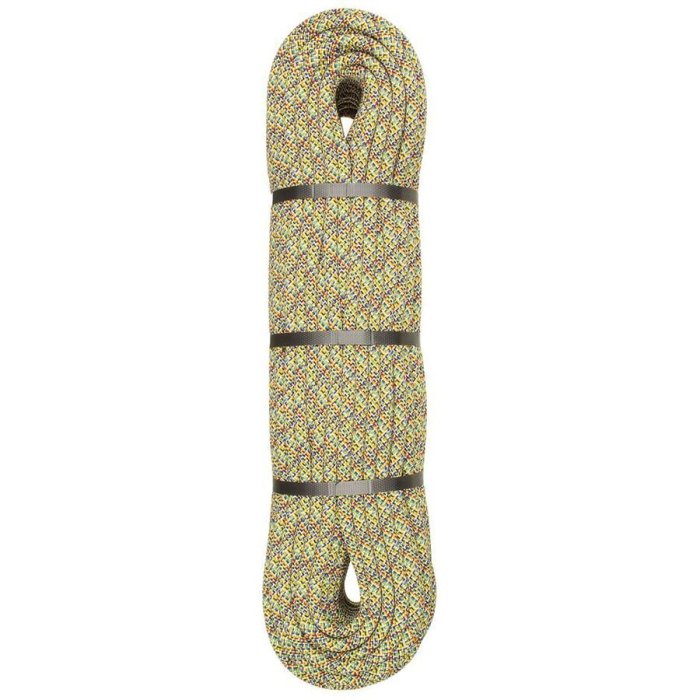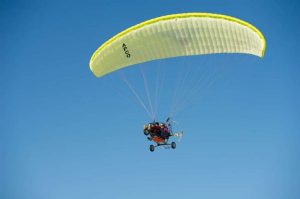
Get ready to explore the world of Eco-friendly climbing practices, where nature preservation meets adventure! From sustainable gear choices to Leave No Trace principles, we’ve got you covered.
Eco-friendly Climbing Practices

Climbing is a popular outdoor activity that allows individuals to connect with nature and challenge themselves physically. However, it is essential for climbers to adopt eco-friendly practices to minimize their impact on the environment and preserve natural spaces for future generations.
Sustainable Gear Choices
Choosing sustainable gear is crucial for reducing the environmental impact of climbing. Opt for gear made from recycled materials, such as ropes, harnesses, and climbing shoes. Look for companies that prioritize eco-friendly production processes and support sustainable practices.
Leave No Trace Principles
Adhering to the Leave No Trace principles is fundamental in climbing to minimize environmental impact. Always pack out all your trash, avoid damaging vegetation, and stay on designated trails to protect fragile ecosystems. Respect wildlife and minimize noise pollution to maintain the natural beauty of climbing areas.
Minimizing Carbon Footprint
Climbers can reduce their carbon footprint by carpooling to climbing destinations, using public transportation, or biking whenever possible. Choose local climbing spots to decrease travel emissions and consider investing in carbon offset programs to mitigate the environmental impact of your adventures.
Cycling & Bikepacking Travel
Cycling and bikepacking are gaining popularity as eco-friendly modes of travel that have minimal environmental impact. Let’s explore the benefits and challenges of using bicycles for travel.
Benefits of Using Bicycles for Travel
- Cycling produces zero emissions, making it a clean and sustainable mode of transportation.
- Bicycles do not require fossil fuels, reducing air pollution and greenhouse gas emissions.
- Cycling promotes physical activity and contributes to personal health and well-being.
- Bike travel allows for a more immersive experience, enabling travelers to interact with their surroundings in a meaningful way.
Comparison of Cycling vs. Other Modes of Transportation
- Cycling is more eco-friendly compared to cars, buses, trains, and airplanes, which rely on fossil fuels and emit harmful pollutants.
- Bicycles have a lower carbon footprint and are a more sustainable option for short to medium-distance travel.
- Cycling helps reduce traffic congestion and the demand for parking spaces in urban areas.
Bikepacking for Sustainable Exploration
- Bikepacking combines cycling and camping, allowing travelers to explore remote areas and natural landscapes sustainably.
- By carrying minimal gear and supplies on their bikes, bikepackers reduce the need for motorized support vehicles and excess packaging.
- Bikepacking promotes a deeper connection with nature and a slower pace of travel, fostering a greater appreciation for the environment.
Challenges and Rewards of Long-Distance Cycling Trips
- Long-distance cycling trips require proper planning, physical endurance, and mental resilience to overcome challenges like inclement weather and rough terrain.
- Despite the challenges, long-distance cycling offers a sense of freedom and accomplishment, allowing travelers to explore new destinations at their own pace.
- Cycling long distances can lead to a greater sense of self-reliance and a deeper connection with the natural world, making it a rewarding and sustainable way to travel.
Road Trips & Van Life Travel
Road trips and van life travel offer exciting adventures, but they also come with environmental impacts. By adopting eco-friendly practices, travelers can minimize their footprint on the planet and enjoy sustainable travel experiences.
Reducing Single-Use Plastics
- Avoid single-use plastic water bottles by carrying a reusable water bottle and refilling it at water stations or campgrounds.
- Opt for reusable utensils, containers, and bags to reduce plastic waste during meals and shopping on the road.
- Choose eco-friendly toiletries packaged in biodegradable or refillable containers to avoid plastic waste.
Minimizing Waste and Energy Consumption in Van Life
- Practice waste separation and recycling inside the van to reduce the amount of trash sent to landfills.
- Use solar panels or portable power stations to generate energy for charging devices and appliances, minimizing reliance on non-renewable energy sources.
- Opt for energy-efficient appliances and LED lighting to reduce energy consumption in the van.
Choosing Eco-Friendly Camping Spots
- Select campgrounds or parking areas that follow sustainable practices, such as recycling facilities and water conservation measures.
- Respect wildlife habitats and natural landscapes by staying on designated campsites and avoiding off-road driving.
- Follow Leave No Trace principles to minimize your impact on the environment while camping in remote locations.
Sustainable Cooking and Living in a Van
- Cook meals using local and organic ingredients to support sustainable agriculture and reduce carbon emissions from food transportation.
- Opt for eco-friendly cookware made from durable materials like stainless steel or cast iron to minimize waste from disposable kitchen items.
- Compost food scraps or organic waste to reduce landfill contributions and create nutrient-rich soil for future use.
Rock Climbing Travel
Rock climbing is a popular outdoor activity that can have significant environmental impacts if not practiced responsibly. Climbers must be aware of how their actions can affect the natural surroundings and take steps to mitigate these impacts to preserve climbing areas for future generations.
Environmental Impacts of Rock Climbing
- Soil erosion caused by trampling vegetation and creating new trails
- Damage to rock surfaces from chalk and climbing gear
- Noise pollution disturbing wildlife
Sustainable Climbing Practices
- Stick to established trails to minimize soil erosion
- Use eco-friendly climbing gear and avoid excessive chalk use
- Respect wildlife and minimize noise pollution
Conservation Efforts in Popular Climbing Destinations
- Red River Gorge in Kentucky, USA: The Red River Gorge Climbers’ Coalition works to protect climbing areas and promote sustainable practices
- Fontainebleau in France: The local climbing community collaborates with conservation organizations to preserve the unique bouldering environment
Contributing to Local Conservation Initiatives
- Volunteer with local climbing organizations to help maintain trails and climbing areas
- Participate in clean-up events to remove trash and debris from climbing sites
- Support conservation projects through donations or fundraising efforts
Extreme Sports Travel

Extreme sports travel presents unique environmental challenges due to the adrenaline-fueled nature of activities like skydiving, base jumping, and big wave surfing. These sports often require specialized gear, transportation to remote locations, and the use of natural resources, all of which can have a significant impact on the environment.
Reducing Ecological Footprint
- Choose eco-friendly gear: Opt for equipment made from sustainable materials and produced in an environmentally responsible manner.
- Minimize waste: Pack reusable items and avoid single-use plastics during extreme sports adventures.
- Support sustainable travel companies: Look for tour operators and event organizers that prioritize environmental conservation and sustainability.
- Offset carbon emissions: Consider carbon offset programs to mitigate the environmental impact of travel and transportation associated with extreme sports.
Sustainable Extreme Sports Events
- The EcoXtreme Games: An annual event that promotes eco-friendly practices and environmental conservation within the extreme sports community.
- Trash Free Trails: A movement within the mountain biking and trail running communities to keep outdoor spaces clean and protect natural habitats.
- The Green Surf Festival: A surfing competition dedicated to raising awareness about ocean conservation and reducing plastic pollution.
Balancing Thrill with Stewardship
Finding the balance between pursuing adrenaline-pumping adventures and being a responsible environmental steward is crucial for extreme sports enthusiasts. By adopting sustainable practices, supporting eco-conscious events, and actively participating in conservation efforts, thrill-seekers can enjoy their sport while minimizing their impact on the planet.
Sailing & Boating Travel
Sailing and boating travel can have a significant impact on marine ecosystems, affecting water quality, marine life, and coastal habitats. It is important for sailors to be aware of these impacts and to take steps to minimize their environmental footprint while out on the water.
Environmental Impact of Sailing and Boating Travel
When sailors and boaters navigate through the waters, they can contribute to water pollution through the release of oil, fuel, and other harmful substances. This pollution can harm marine life, disrupt ecosystems, and degrade water quality. In addition, the physical presence of boats can lead to habitat destruction, disturbance of marine animals, and the introduction of invasive species.
Eco-Friendly Practices for Sailors
- Avoid using toxic cleaning products and opt for environmentally friendly alternatives.
- Properly dispose of waste and recycle whenever possible to reduce marine pollution.
- Use biodegradable soaps and detergents when washing dishes or clothes on board.
- Choose sustainable seafood options and support local marine conservation efforts.
- Reduce fuel consumption by sailing more and using wind power whenever feasible.
Sailing Adventures Promoting Marine Conservation
There are many inspiring stories of sailing adventures that focus on marine conservation and sustainability. From ocean clean-up expeditions to research voyages studying marine life, these adventures showcase the importance of protecting our oceans and marine ecosystems.
Supporting Local Marine Conservation Initiatives
- Volunteer with marine conservation organizations during port stops to contribute to conservation efforts.
- Participate in beach clean-up initiatives and educate others about the importance of marine conservation.
- Donate to local marine conservation projects or purchase products that support marine protection initiatives.
- Engage with local communities to learn about their marine conservation challenges and ways to support their efforts.
Final Review
As we reach the end of our eco-friendly climbing journey, remember that every step you take can make a difference in preserving our natural environments. So gear up, climb on, and keep our planet green!
Essential Questionnaire
How can climbers reduce their environmental impact?
Climbers can opt for sustainable gear choices, follow Leave No Trace principles, and minimize their carbon footprint while climbing.
Why is it important to practice eco-friendly climbing?
Eco-friendly climbing helps preserve natural environments, ensuring that future generations can enjoy these beautiful outdoor spaces.
Can climbers contribute to conservation efforts while traveling?
Absolutely! Climbers can support local conservation initiatives in popular climbing destinations to help preserve these areas.





